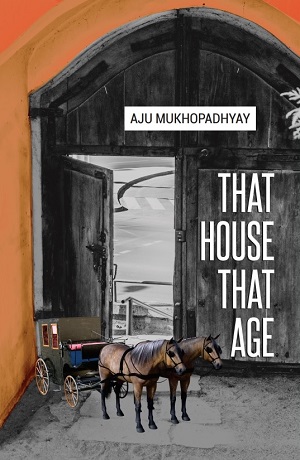Apr 28, 2025
Apr 28, 2025
That House That Age by Aju Mukhopadhyay
Earth Vision Publications, India, July 2021
Amazon ASIN: B099NF1DNS
About the Book
 The story is based on a family founded by a wealthy man who came from a village to Kolkata city towards the end of the ï¬rst half of the nineteenth century. The family grew to an enormous size through many ups and downs during the colonial period and continued beyond the Indian independence; family stream flowed to the post-colonial era. The house was sold at one time and new units of the divided family; the progeny of the patriarch, spread to different areas of the vast city and beyond, even to other provinces of India. Some have gone and settled in foreign countries. The family stream remains connected through tributaries, streams of communications and memories.
The story is based on a family founded by a wealthy man who came from a village to Kolkata city towards the end of the ï¬rst half of the nineteenth century. The family grew to an enormous size through many ups and downs during the colonial period and continued beyond the Indian independence; family stream flowed to the post-colonial era. The house was sold at one time and new units of the divided family; the progeny of the patriarch, spread to different areas of the vast city and beyond, even to other provinces of India. Some have gone and settled in foreign countries. The family stream remains connected through tributaries, streams of communications and memories.
The patriarch of the Kolkata family was one of the patricians of Kolkata. A great man though he was not widely known; he established industry and commerce, business relationship of considerable volume and size during his lifetime but his next generation extravagantly wasted the wealth and almost ruined the flourishing business and industry. They were once Zamindars in the countryside and that pride ruined them more. Had it not been so the patriarch would be known as one of the makers of modern India for his pioneering activities in business, commerce and industry.
Many spectacular things of grave consequences happened during the span of the ï¬rst three generations. The period covered Bengal Famine, Second World War and Indian Independence movement including their political and economic consequences and freedom. At the time of the fourth generation from the time of the founder, their city dwelling house was sold when India was independent. Members scattered to different shelters have remained connected socially and digitally. While the family has overflowed to ï¬fth and somewhere to the sixth generation, the house stands in its ground without any big repair and renovation for more than 200 years in spite of its changed ownership. While recording the events of the time the novel has recorded in its body the history, changing tradition and culture of the people of India, especially Bengal and its capital, Kolkata. The members of the family carry the changing ethos of the time and space covering the entire globe in its heart.
The whole story is based on memories of the protagonist of the novel, Rano or Ranadeb and others. Rano's story includes his belief in living with his wife who was his mother in her last birth. He being the eldest son in the family among the brothers, his own and his cousins, he knew things by heart most of which was witnessed by him and kept in his memory; something of it was heard by him, learnt from his father and other elders. His father was an ancestral family storyteller till his end. Rano closely lived with him, heard his stories often and on. His father was the eldest among brothers and sisters, except one sister who died early and knew his father intimately; none else except his next brother knew who never told such stories. All other living uncles of Rano had little memory of their father; the last one was born posthumously; they were much younger to his father. After the house was sold, he found his great grandfather's grand Will in his possession, perhaps given to him by his father who least bothered to keep them with more care than his smokes, bidis. One of Rano's brothers kept some of the not-too useful items in his personal care which none else thought of keeping as they carried no economic value. A few Xeroxed, sometimes charred copies of old and discarded agreements among the next generation owners and partners of the business of the companies founded by his great grandfather, helped Rano to form an idea of how his grandfather handled them and to what state they reached in the course of time, an idea of how the business changed hands, gradually going out of control of the original owners.
Though based on his memories the work required some investigation, visits and research work, some studies of the lives and chronology of events and some histories. It has to be remembered that it is a work of ï¬ction. It does not contain events exactly as they happened. The narration contains happenings outside the house and the family. It is not exactly a family saga. As an artwork it has its own course and development, its own logic and arrangement.
Continued to Next Page
31-Jul-2021
More by : Aju Mukhopadhyay